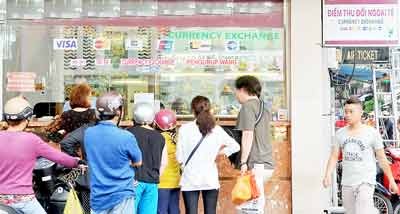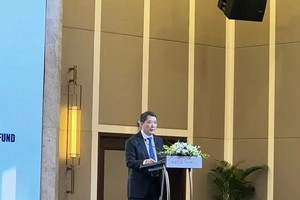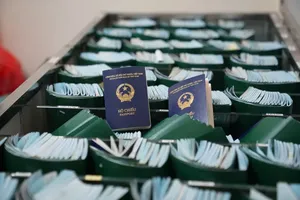After the State Bank of Vietnam (SBV) devalued the Vietnamese dong by another 1 percent against the US dollar for the second time recently increasing trading band from plus or minus 2 percent to 3 percent, many banks have reported neither foreign currency demand and supply tensions nor sudden changes in the market.

A forex expert from a financial fund said that commercial banks in short foreign currency position had purchased the greenback after the exchange rate increased, leading to supply and demand tensions sometimes. Many banks had lifted their US dollar prices.
However, deputy director general of a state-run bank in HCMC said that was a normal market response. After SBV lifted the trading band and the inter exchange rate, foreign currency demand and supply usually saw some certain fluctuations but they were not sudden.
Commercial banks have posted US dollar prices in accordance with the market situation to balance customers’ demand not to solve weak liquidity.
Asian Commercial Bank leaders said the State Bank’s exchange rate change a macro measure. From banking angle, foreign currencies were a kind of commodities so their prices also depended on market supply and demand.
Deputy director general of HCMC Housing Development Bank Nguyen Thanh Trung said that SBV’s moves were to counter the sharpest Chinese currency depreciation for the last two decades and protect domestic market and exports.
Export firms were afraid of exchange rate risks and did not sell the US dollar for the last couple of weeks, according to a leader of SBV’s branch in HCMC. They have begun selling in quite large volume, creating a considerable supply source for the banks.
The exchange rate fluctuations have concerned many businesses.
Director general of Thai Son Nam Company Tran Viet Anh said that it was not difficult to buy the US dollar now but they had to paid high, causing them losses.
When the company signed contracts to import materials, the rate was only VND21,800 per US dollar, which has inched up VND500 to VND22,300, he added.
Hence, the company suffers a loss of VND500 million (US$22,356) for a consignment worth US$1 million now. This will force the company to increase prices affecting its competitiveness. Meantime, Chinese goods have flowed into Vietnam at the price which is 20-30 percent lower than that of domestic products.
Representative of Nhat Tan Company said that the dong devaluation would advantage large export firms but disadvantage small companies who mainly import materials for production and sell in local market.
Related artice:
VN central bank devalues dong by another 1 per cent













)

)








